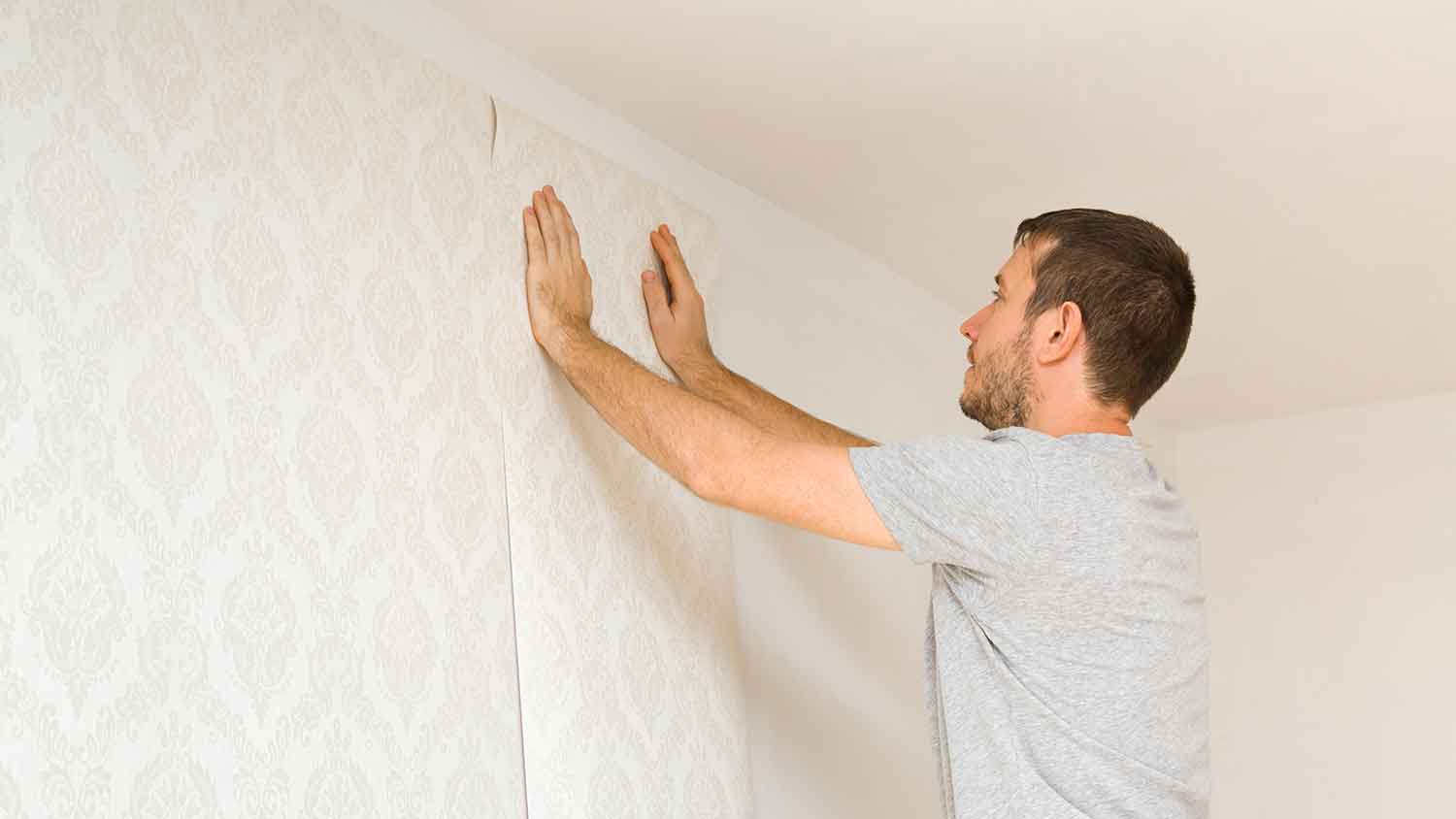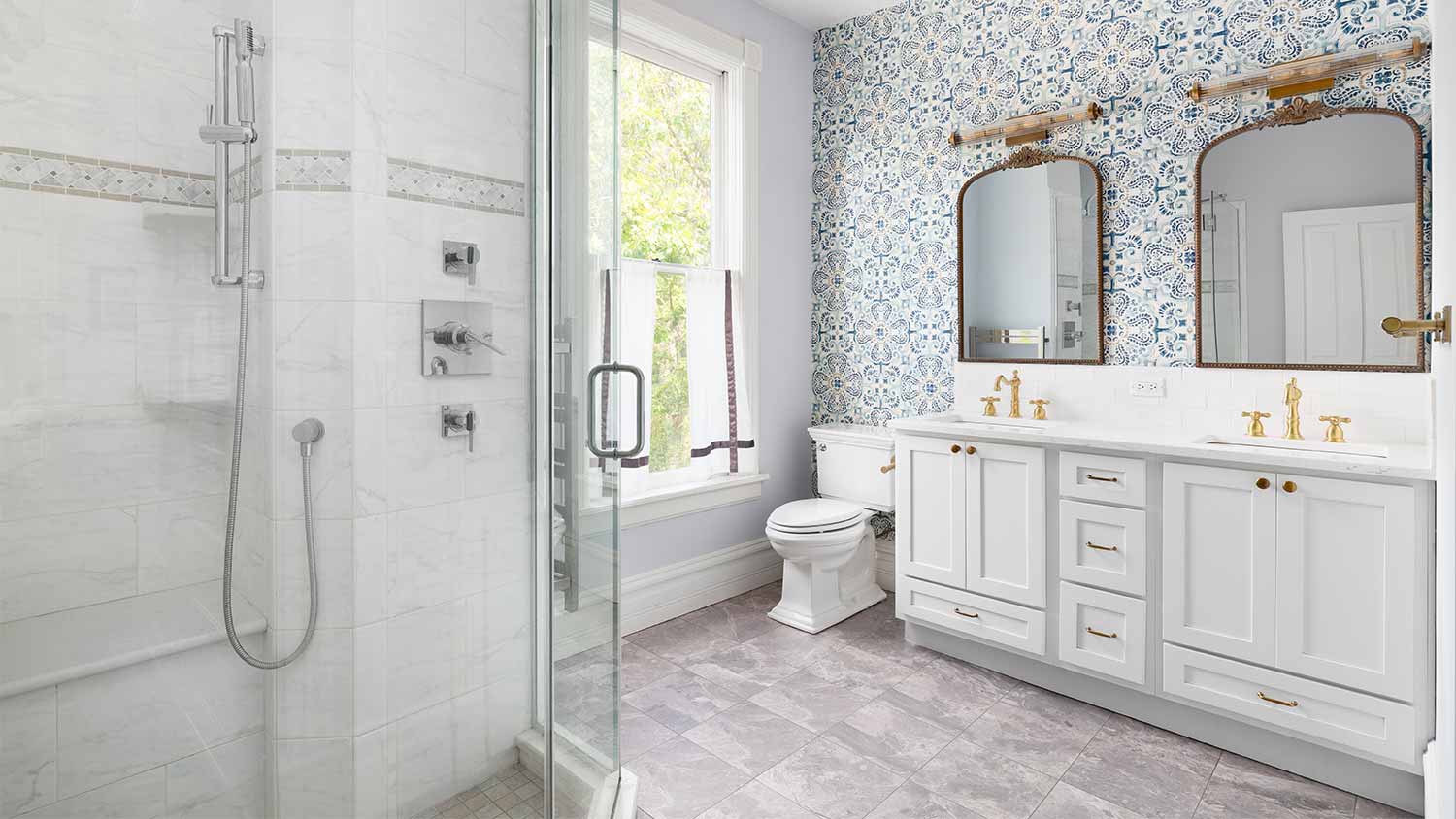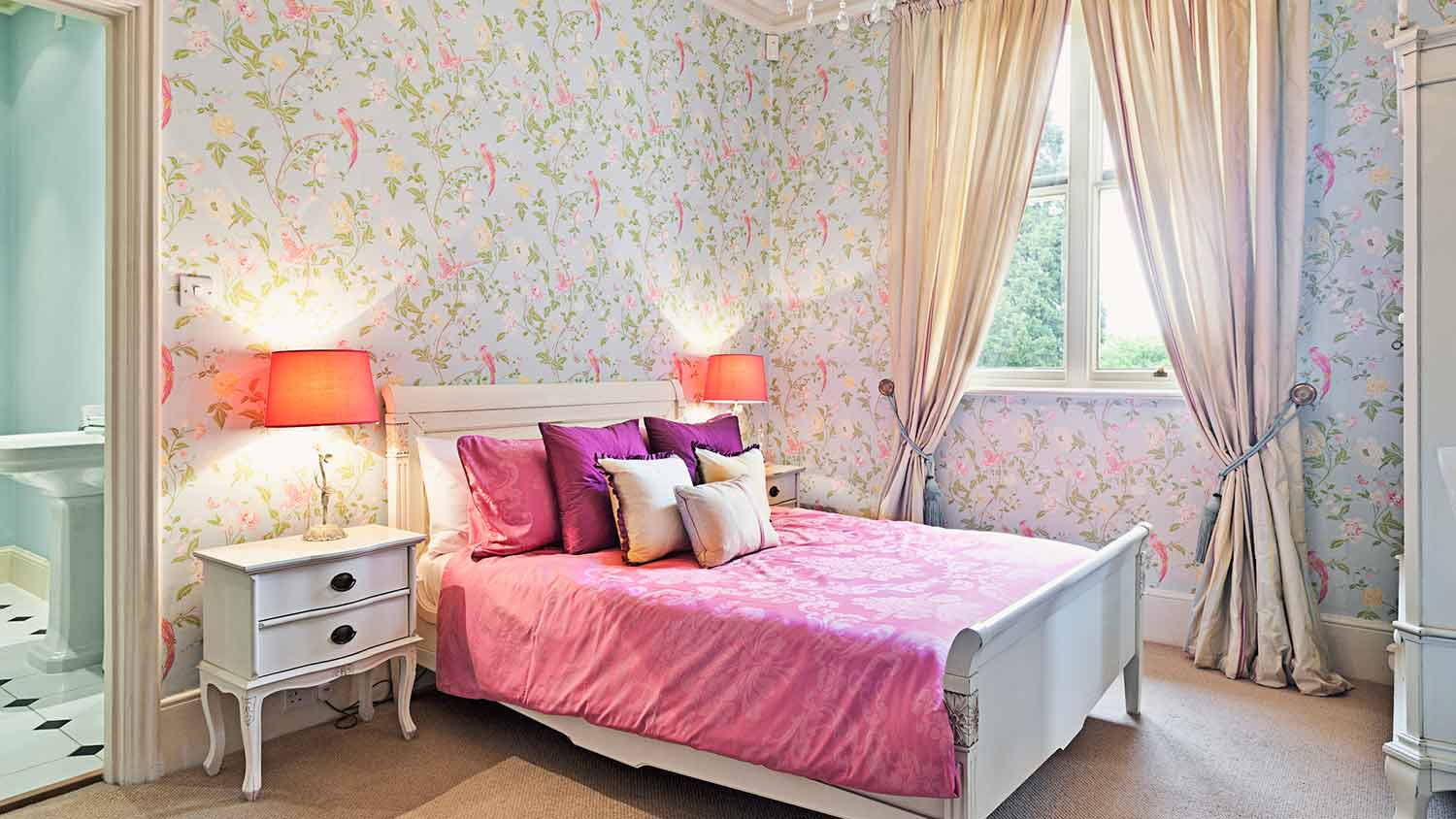
Discover wallpaper installation cost. Learn about material, labor, and project factors to estimate your budget and make informed choices for your home.
Get prime results with the right wallpaper prep


Wallpaper primer helps wallpaper adhere properly and protects your walls.
Removing wallpaper is easier and less likely to damage your walls if you use primer.
Apply primer and let it fully dry for 24 hours before installing wallpaper.
When you’re ready to change a room’s look with wallpaper, it’s important to do the job right. Using wallpaper primer is an important step in the installation process—without it, your wallpaper won’t perform as expected and may start to peel or bubble, damage your walls, or be difficult to remove. Learn why wallpaper primer is necessary and why it’s so important to prime before wallpaper installation.
Wallpaper primer is specially designed to be applied to your walls before you install wallpaper. It has a lot in common with paint primer—it’s a liquid that comes in a can and is rolled onto your walls. Unlike paint primer, though, wallpaper primer ensures your wallpaper can adhere to the wall correctly and protects both your wall and the wallpaper from damage.
How many coats of primer you need depends on the type of primer and the surface you’re priming, so be sure to consult the instructions for your wallpaper and the primer.

The primary function of wallpaper primer is to help it properly adhere to the wall. Whether you’re installing wallpaper over drywall, paint, or existing wallpaper, primer provides the ideal surface to ensure your wallpaper adheres well and won’t peel or bubble. Wallpaper adhesive won’t stick well to everything, so it’s important to prime the wall with a product made just for that purpose.
Wallpaper primer protects your wall by forming a protective layer between the adhesive and the wall. Unfinished drywall can absorb wallpaper adhesive, damaging the drywall. Wallpaper adhesive can also soften latex paint, leading to a soft, sticky mess that doesn’t properly dry under the wallpaper.
When it comes time to remove your wallpaper, you’ll be glad you used primer. By creating a barrier between the wallpaper and your wall, primer prevents the adhesive from bonding too strongly to the wall. When you try to remove wallpaper bonded directly to the wall’s surface, there’s a good chance you’ll end up taking part of the wall off with the wallpaper. Primer leaves the wall intact and makes the removal process a lot smoother.
If the prep process seems too involved for you to tackle as a DIY project, hire a pro who installs wallpaper to get the job done right. A local wallpaper installer will prep and prime your walls, giving you a flawless finish and wallpaper that’ll look great for years to come.
Wallpaper installation costs an average of $1 to $7 per square foot, plus the cost of the wallpaper. Whether you’re wallpapering an entire room or just making a wallpaper accent wall, a wallpaper installation pro will ensure you get the best results.
From average costs to expert advice, get all the answers you need to get your job done.

Discover wallpaper installation cost. Learn about material, labor, and project factors to estimate your budget and make informed choices for your home.

Want to dress up the walls of your home? Installing wallpaper is the way to go. Once you've hired an installer, be sure to ask these wallpaper questions.

Struggling to choose between wallpaper versus paint for your interior space? Learn how these options compare and which is best for your next project.

Is washable wallpaper suitable for bathrooms? Yes, but this only applies to certain types of wallpaper in specific situations. Here’s what you need to know.

Love the look of wallpaper, but not sure which type is best? Learn the differences between peel-and-stick versus traditional wallpaper in this guide.

Ready to add some pizzazz to your room with stylish wallpaper? Learn how to install vinyl wallpaper that looks as seamless as its stunning design.